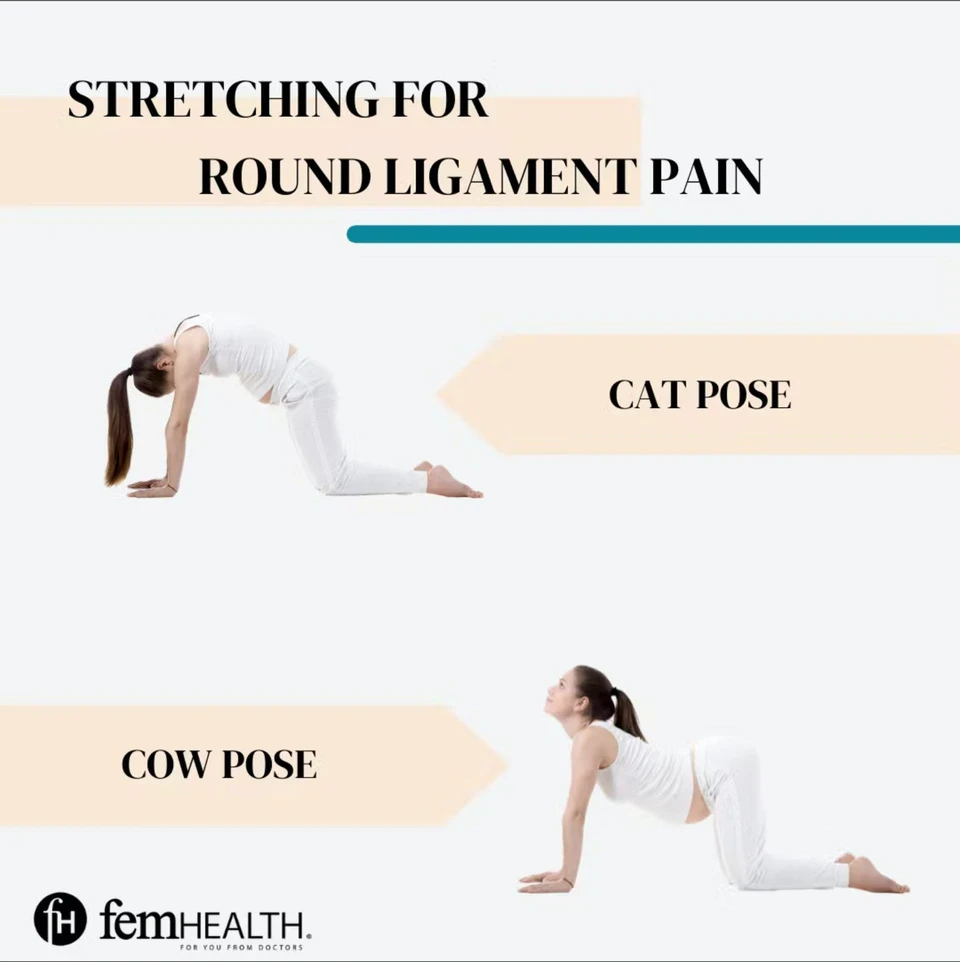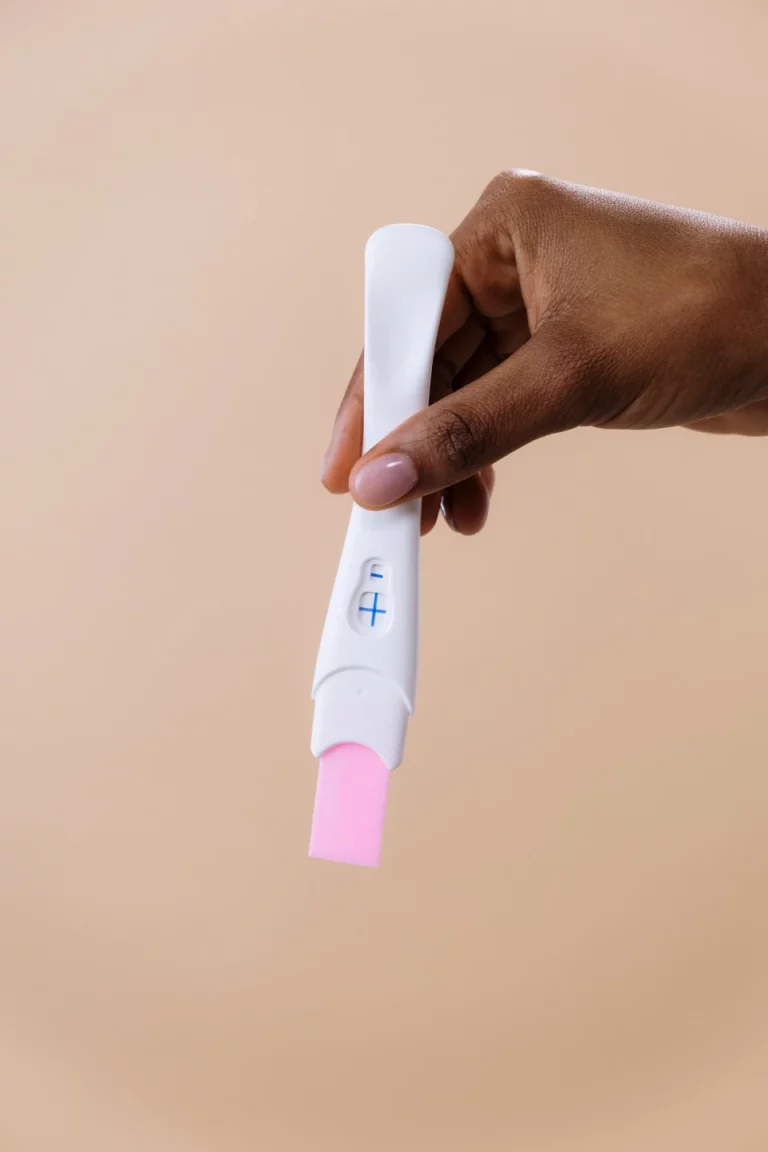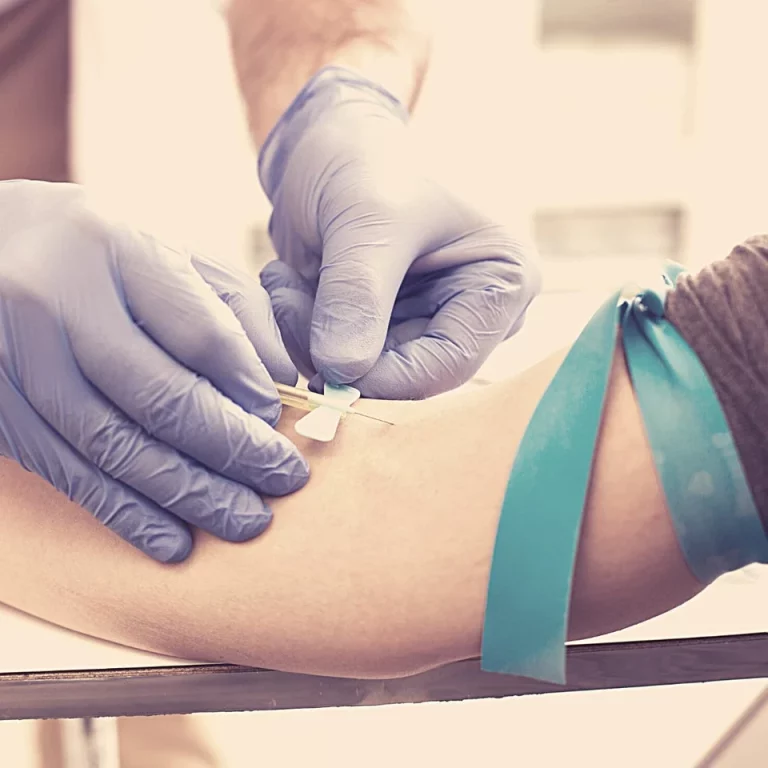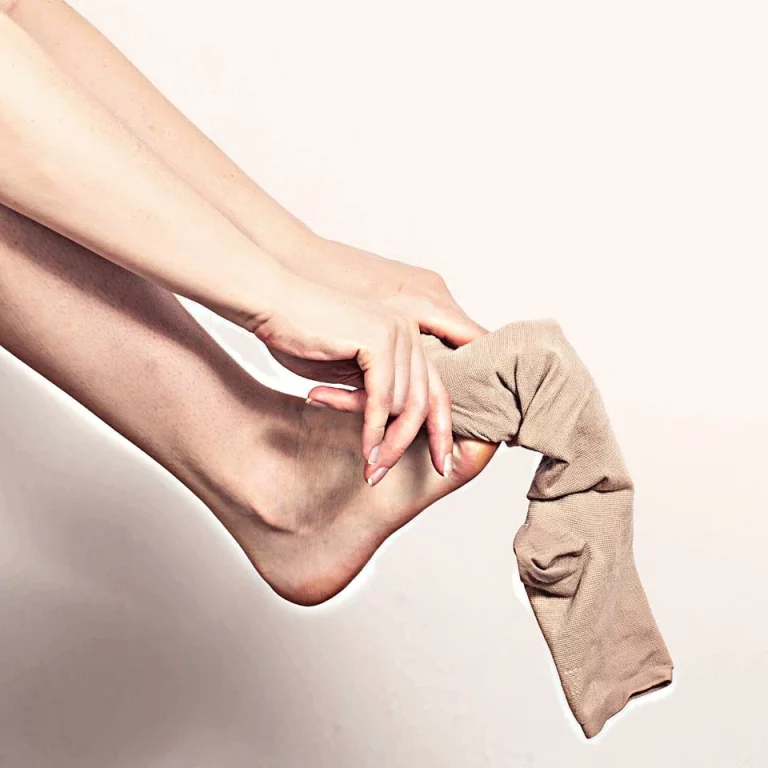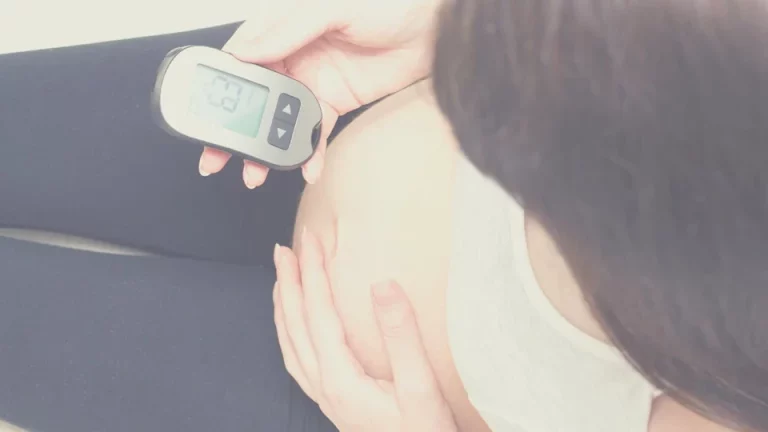Round Ligament Pain Relief Stretches & Tips
Stretching for round ligament pain can be very helpful to provide relief in pregnancy. Read below for some simple stretches you can try at home.
Round Ligament Pain Location And Why Stretching Helps
Round ligament uterus pain occurs in pregnant women most commonly in the third trimester. It can have a range of symptoms from a sharp pain (lightening crotch), or even a dull ache in the lower abdomen. The round ligament is a connection between the uterus and the groin. As your belly grows, especially during the second trimester of pregnancy, this can be the start of round ligament pain.
Sudden movements like twisting, coughing, or sneezing can aggravate this area of the body. Thus, exercises for round ligament pain relief focus on the pelvic area and make you able to tolerate movement better. It is unfortunately a very common pregnancy symptom, but the good news is that in addition to gentle stretching, there are many different things you can do to feel better.
Stretching For Round Ligament Pain
Round ligament pain in pregnancy can be improved by the following yoga exercises which focus on the pelvic area of the body. Because the round ligaments stretch in the second half of pregnancy, even normal activities can aggravate the pain. Quick movements especially can cause shooting pains. Here are some of the stretches that can help you find pain relief for the groin area.
Butterfly Stretch
Start by sitting upright on a firm surface. With good posture, place the soles of your feet together. Pulse your legs up and down, like the wings of a butterfly, until you feel a stretch in your inner thighs. For a deeper stretch, you can have a partner place their hands on your knees for resistance.

Cat-Cow
Start with your hands and knees on the floor with your shoulders directly over your wrists, and your hips directly over your knees. While breathing in, drop your stomach down so that your back arches and your face looks slightly up. This is called the cow position. While breathing out, round your upper back, and allow your head to drop and face your belly. This is called the cat position. You should do this stretch at a slow pace for at least one minute. Then, take a break and then repeat it 2 to 3 times. (Pictured above)
Leg Extensions
You can do this exercise after you have done the Cat-Cow stretch since you will already be in the correct starting position. From all fours, extend your right leg back, press your heel back, and then gently lift your leg up. You can hold this position for 5 to 7 seconds and then repeat. Finally, switch sides and perform the same stretch with repetition.
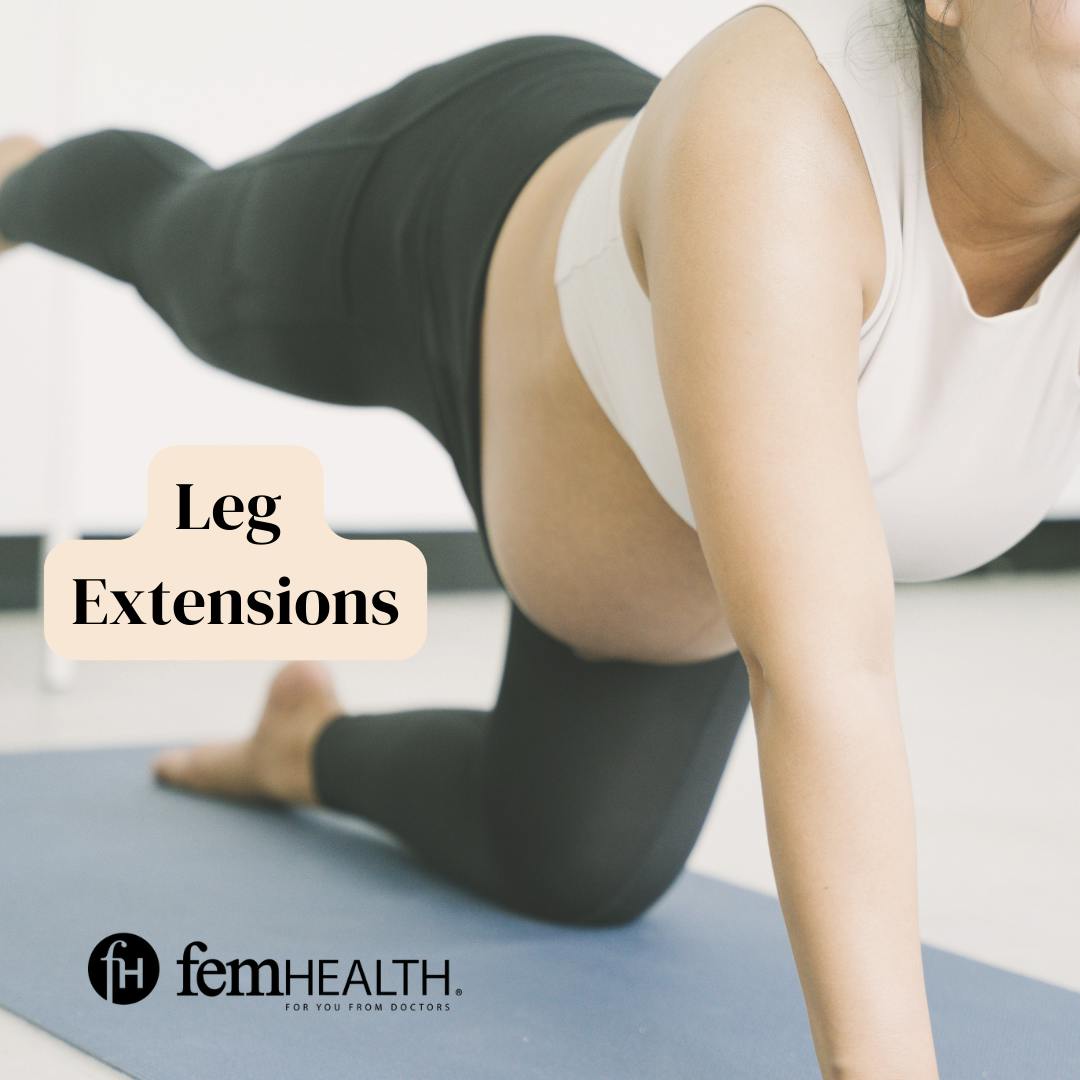
Pelvic Tilt Stretch
Start by lying on your back, and then bend your knees bent but keep your feet flat on the floor. Inhale deeply and tighten your abdominal muscles. While holding your breath and your abdominal muscles, push the small of your back into the floor. Hold this position while breathing out for 5 to 7 seconds. Repeat this exercise for 1 to 2 minutes.
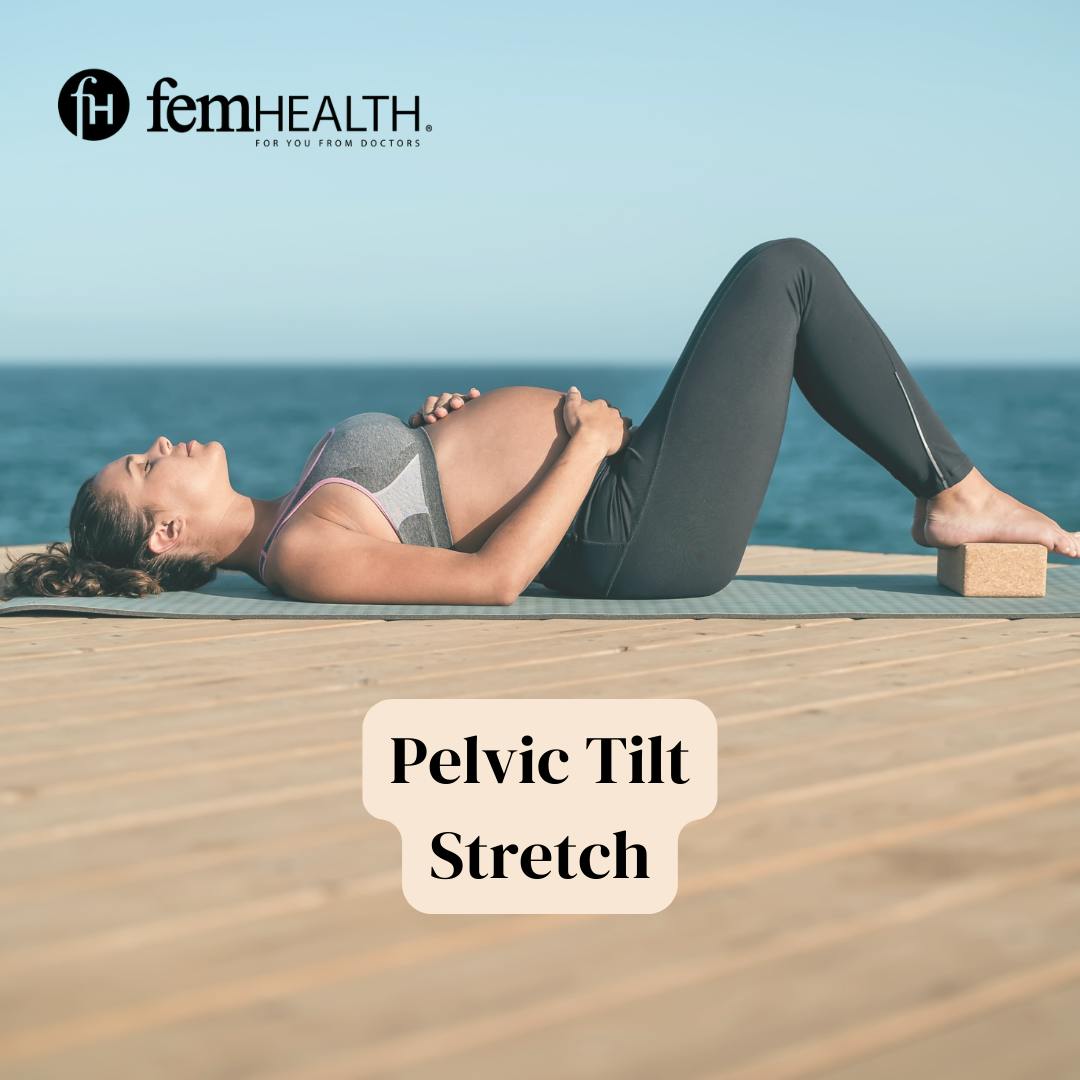
Side Lying Savasana
Usually, the Savasana pose in yoga practice is done lying on your back. As your pregnancy progresses, lying on your back can not only be uncomfortable, it can potentially cause issues as the growing uterus can put weight on the blood vessels that lead to your heart. For this reason, lying on your side, especially later in pregnancy is a better option. Lying on your left side, tuck your left arm beneath your head to provide a cushion. Place a pillow between your legs and flex your hips. You can also close your eyes if you choose to and breathe deeply to help eliminate any tension from your body. You can lie in this position for several minutes, and repeat this throughout the day.

Knee-to-Chest Stretch
Related: Round Ligament Pain In Pregnancy
This gentle stretch targets the hip flexors and lower back, providing relief for round ligament pain. First, lie on your back with your knees bent and feet flat on the floor. Then, gently bring one knee towards your chest, holding it with both hands. Hold this for 15-30 seconds, then slowly release and switch legs.
Seated Forward Bend
This stretch targets the lower back, hips, and hamstrings, helping relieve round ligament pain. Sit on the floor with your legs extended in front of you. Lean forward slowly, reaching towards your toes, while keeping your back straight. Hold the stretch for 15-30 seconds, then release.
Remember to consult your healthcare provider before starting any new stretches or exercises during pregnancy. Listen to your body and only perform stretches that feel comfortable and do not cause pain.
More Treatment Options For Round Ligament Pain Relief
In addition to stretching, there are other things you can try to help relieve round ligament pain.
Heating Pad
Using a heating pad to the affected area can help relax tight ligaments and muscles, providing relief from round ligament pain. A warm towel can also be used to gently heat the area for 10-15 minutes a few times a day. Many patients also find that using a hot water bottle is easy and convenient, or taking a warm bath.
Massage
Gentle massage around the affected area can help relax the muscles and ligaments, and improve blood circulation. You can either self-massage or ask your partner to help, using slow, circular motions with gentle pressure for a few minutes daily.
Proper Body Mechanics & Posture
Maintaining proper posture and body mechanics can help prevent round ligament pain by reducing stress on the ligaments. Avoid sudden movements, lift with your legs instead of your back, and maintain proper sitting posture with back support. For some women a maternity belt or support band to fasten under the baby bump can also be very helpful.
Over-the-counter pain relievers
For mild round ligament pain, over-the-counter pain relievers like acetaminophen can be taken, as long as your healthcare provider approves. However, avoid using non-steroidal anti-inflammatory drugs (NSAIDs) like ibuprofen and aspirin during pregnancy, as they can pose risks to both you and your baby.
Constant Round Ligament Pain
If you are having constant severe pain and also having a difficult time relieving your round ligament pain, it is very important to see a doctor. The following symptoms may indicate that your pain may be from something more serious:
- Severe pain: If the pain is unbearable, persistent, or interferes with your daily activities, it’s a good idea to consult your doctor for evaluation.
- Fever or chills: Any fever or chills accompanying the pain may indicate an infection that requires medical attention.
- Nausea, vomiting or diarrhea: These symptoms, in combination with round ligament pain, could suggest an underlying condition that needs professional care.
- Signs of preterm labor: If you’re experiencing regular contractions, bleeding, unusual vaginal discharge, or a constant lower back pain, it’s crucial to consult your doctor as these may be signs of preterm labor.
- Unusual pain pattern: Persistent pain that doesn’t resemble typical round ligament pain, such as sharp, stabbing pain or cramping, should be evaluated by a healthcare professional.
Remember, it’s always better to err on the side of caution when pregnant. If in doubt or worried about the pain, contact your doctor for guidance.
Treatment & Stretching For Round Ligament Pain Relief: Summary
Due to the round ligament pain location on the side of your uterus, exercises for this discomfort focus on the pelvic area of your body. There are several prenatal yoga stretches and poses that you can try to help to relieve round ligament pain. You will also want to avoid quick movements or sudden physical activity. Be sure to change positions slowly and with ease to protect the hip area. Applying some heat can also help pregnant people who are experiencing this. Round ligament pain is very common and is a fairly normal part of pregnancy. It is a good idea to chat with your doctor if round ligament pain is constant or severe as this could be a symptom of something more serious.
We discuss products we think are useful to people. If you buy something through our links, we may earn a commission. Remember to check with your personal physician to see if a product recommended is right for you.


